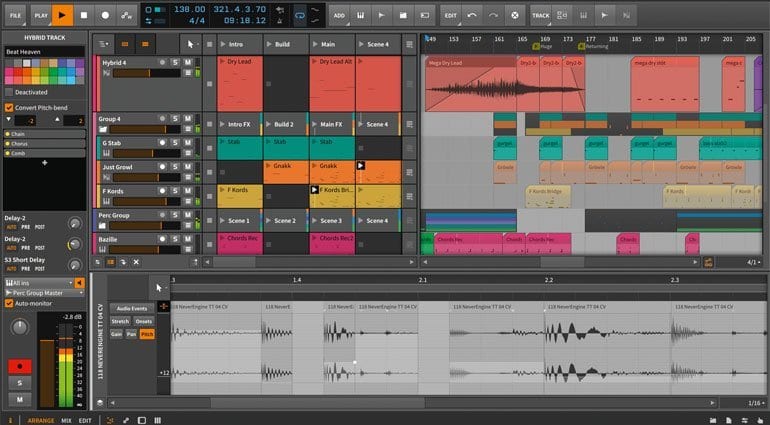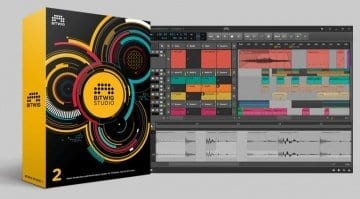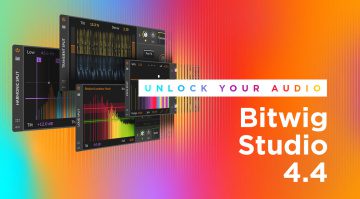Bitwig Studio 2 now available
Bitwig Studio 2 was announced in the lead up to NAMM in January. Many catch-up features have been implemented along with an innovative new modulation system.
Bitwig Studio 2
In the house-keeping department they’ve finally introduced cross-fading for audio clips. This is not just in the timeline but also in the editor. They’ve added VST3 support. Bitwig has always had a very robust plug-in architecture and it’s good to see this updated to include VST3. They’ve tinkered with the tools, improved the devices and stuck in an annoying dashboard to help you get to things that you didn’t need help finding.
But there are two areas where Bitwig Studio 2 are pushing the curve: modulation and hardware.
Modulators
The devices in Bitwig 1 always had a good lot of modulation possibilities. You could allocate LFO’s all over the place to different or simultaneous parameters. In version 2 they’ve pulled out the LFO’s and given them their own space and expanded the roster. You now have 25 different ways to modulate your parameters.
Each device now has its own modulation slot into which you can drop these modulators. You’ve got LFO’s of course, but also mathematical functions, randomisation, envelopes, vectors, beats and expressions. They can be chained up in all sorts of interesting ways. Some support a polyphonic mode so that they can modulate per voice.
The only other DAW I can think of with anything like this is Tracktion where you can pull an LFO onto absolutely anything. Bitwig Studio 2 goes much further than that and brings something truly creative and innovative to the table.
Hardware
One unexpected feature was the integration of CV/Gate devices. This enables Bitwig to output control voltages and gate signals via some internal MIDI and CV devices. This gives you seamless control over external MIDI and modular gear. Although to take advantage of the CV output you’ll need an audio interface with DC Coupled outputs.
Sync
What does seem to be missing for me is Ableton Link. It’s such a cool technology that I’m surprised that Bitwig hasn’t embraced it. However, I did hear a rumour that someone from Bitwig has been seen on Ableton Link development forums, so maybe it’s something that will come.
Tutorials
Along with the launch comes a batch of new training videos (see below). The Absolute Beginner’s Guide is presented by the awesome Thavius Beck and created with Askvideo. However, it will cost you €19.50 and this feels slightly wrong to me. It’s a bit like asking you to buy the manual separately. I would have thought the Beginner’s Guide series should be given away free with the purchase of Bitwig Studio 2 and then perhaps charge for more in-depth videos. Maybe that’s another thing they share with Tracktion.
Licensing
Anyway, Bitwig Studio 2 is available now direct from the website for €379 including 12 months of free upgrades – yes that’s right, they have introduced their own update subscription service. Although it’s not a “subscription” as such it’s a “perpetual license” and the difference is actually important. With your purchase you get any updates free for 12 months. After that time your software continues to work (so it’s not a subscription) but any new updates will require you to buy another upgrade plan. The upgrade plan costs €159 which is currently the price of the upgrade from Bitwig 1 to 2. So from Bitwig’s point of view they get some badly needed development income and an incentive to keep innovating – but that only really works for us users if we get some major updates every year. I really hope that all pans out. More details on the licensing can be found here.
More information, videos and pricing details can be found on the Bitwig website.
You are currently viewing a placeholder content from YouTube. To access the actual content, click the button below. Please note that doing so will share data with third-party providers.









